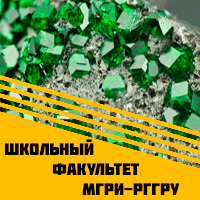Добрый день, Коллеги. Важное сообщение, просьба принять участие. Музей Ферсмана ищет помощь для реставрационных работ в помещении. Подробности по ссылке
Principles of mathematical petrophysics / Основы математической петрофизики
Mathematical astrophysics and mathematical geophysics have their own journals and conferences, where practitioners discuss mathematical formulations that come to grips with the physical processes of the cosmos and planet Earth. Mathematical petrophysics is by no means new. It started in 1942 with the publication of an equation: the Archie equation. Strictly speaking, there are two Archie equations. The first describes the resistivity of a rock filled with salt water. The second equation is concerned with the resistivity of hydrocarbon-bearing formations and proposed a prediction of hydrocarbon saturation. This quantitative outcome moved the vagueness of “log interpretation” to “log analysis” and was finally dignified with the name of “petrophysics” by Archie in 1950. The Archie equations are still used today, and the huge economic value of these and further developments is the principal reason why mathematical petrophysics is not an academic speciality. The consequences of poor mathematical decisions raise more than academic passions, because of potential losses of millions of dollars. Furthermore, the traditional differentiation between reservoir rocks and seals has recently crumbled with the emergence of resource plays, typified by tight porosities and minimal permeabilities. Consequently, mathematical petrophysicists continue to be challenged to propose new algorithms that characterize nontraditional targets as well as refining established methodologies to manage large but aging fields. <...>




